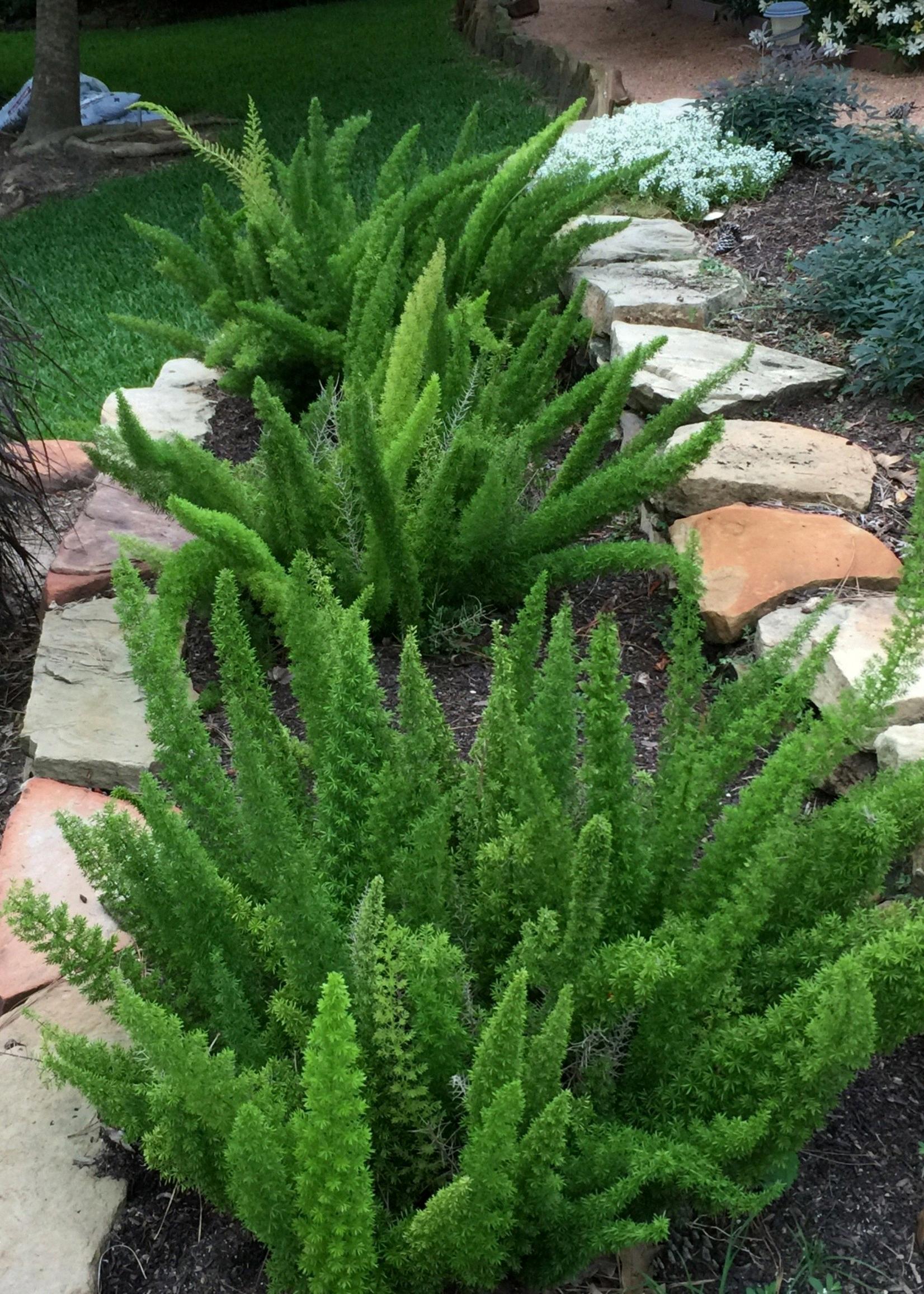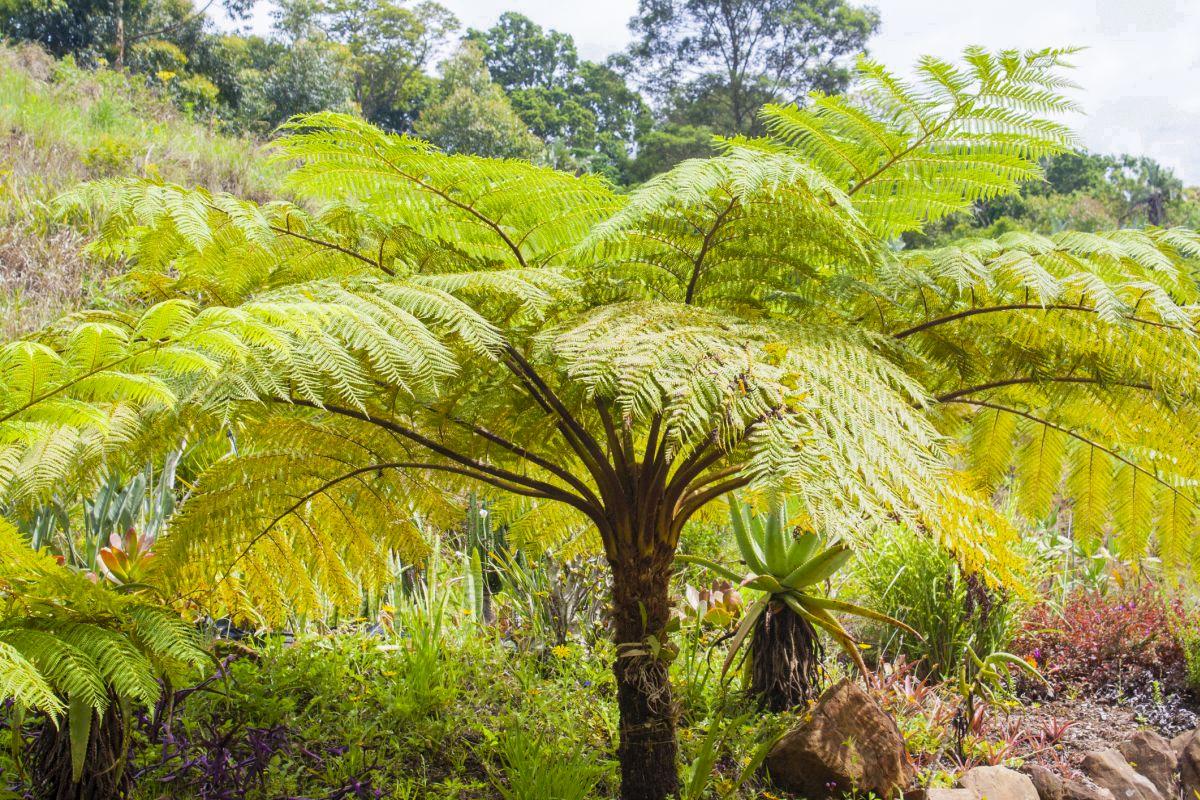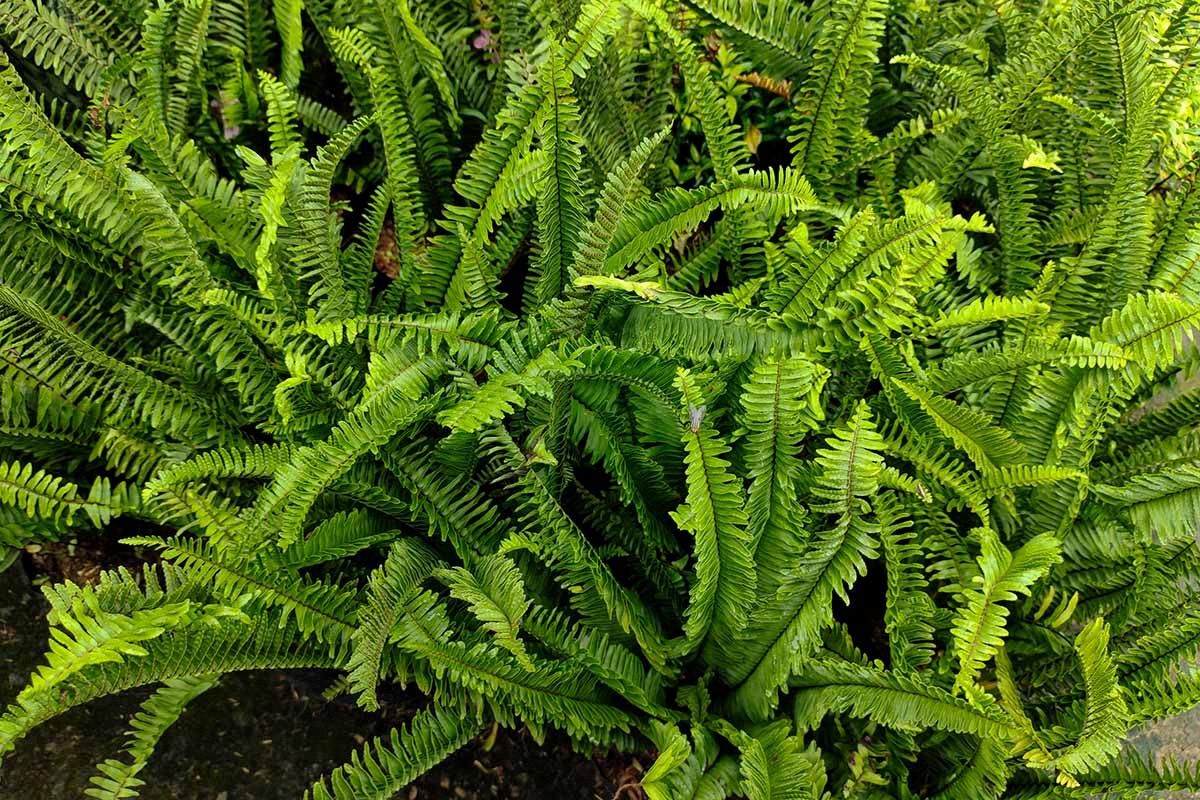Ferns are unique plants that have captured the fascination of botanists and nature enthusiasts for centuries. Many people wonder whther ferns have seeds, and the answer is both yes and no. While ferns do not produce seeds in the traditional sense, they do reproduce through a similar process called spore production.
Spores are small, lightweight reproductive cells that are produced by the fern’s sporangia, which are structures located on the underside of the fronds. These spores are dispersed by the wind and can land on a suitable surface, such as damp soil or decaying organic matter.
Once the spores have landed, they can germinate and grow into a small, heart-shaped structure called a prothallus. The prothallus produces male and female reproductive cells called gametes, which can fertilize each other and form a new fern plant.
While spore production is the primary method of reproduction for ferns, some species can also reproduce asexually by producing clones of themselves through a process called vegetative propagation. This can occur when new plants sprout from the rhizomes or roots of an existing fern.
It is important to note that while ferns do not produce traditional seeds, they are still incredibly important to the ecosystem. Ferns play a crucial role in maintaining healthy soil by breaking down organic matter and releasing nutrients back into the environment. They also provide habitat for a variety of insects and animals, and their lush foliage adds beauty to gardens and natural landscapes alike.
While ferns do not have seeds in the traditional sense, their unique method of spore production ensures that they can continue to thrive and reproduce in a variety of environments. Whether you are a botanist, nature enthusiast, or simply appreciate the beauty of these fascinating plants, ferns are a truly remarkable part of the natural world.
Obtaining Seeds from Ferns
To obtain seeds from ferns, you need to collect spores instead of seeds. The frst step is to locate a mature fern frond and place it onto a smooth white paper. After several days, the spores will ripen and fall onto the paper. To plant the spores, you will need to carefully fold the paper so that the spores fall into the crease. Then, sprinkle the spores onto a potting mix that is moistened with distilled water. Cover the pot with a plastic bag to create a humid environment and place it in a warm and bright location, but not direct sunlight. After several weeks, the spores will germinate and grow into tiny ferns. As they grow, you can transplant them into separate containers or into a garden bed. It is important to note that growing ferns from spores is a delicate process that requires patience and attention to detail.

Do Ferns Contain Seeds?
Yes, seeds are present in some types of ferns. However, unlike flowering plants, ferns do not have flowers or fruits. Instead, their seeds are produced in structures called sporangia, whch are located on the undersides of the leaves or fronds. The sporangia contain spores that develop into gametophytes, which produce the sex cells that eventually form the seeds. These seeds are surrounded by a hard inner integument and a fleshy outer layer, and are dispersed by various means, such as wind or animal transport. So, while not all ferns produce seeds, some do, and they have a unique reproductive process that sets them apart from other types of plants.
The Absence of Seeds in Ferns
Ferns do not have seeds because they are ancient plants that reproduce through spores. Unlike seeds, spores do not contain plant embryos or food stores. Instead, spores are produced in special structures called sporangia, which are located on the underside of fern fronds. When the spores are mature, they are released into the air and can travel long distances. If conditions are favorable, the spores can germinate and grow into new fern plants. While most modern plants use seeds as their main method of reproduction, ferns have been able to survive and thrive for millions of years using spores.
Ferns’ Seed Growth Habits
Ferns do not grow seeds like most other plants, instead they reproduce by producing spores. These spores are found in clusters called sori that are usually located on the underside of the fern’s fronds. The sori can be identified as small, rounded or elongated structures that vary in color from yellow, green, brown, to black. When the spores are mature, they are released into the air and can be carried by the wind to new locations where they can germinate and grow into new fern plants. Therefore, ferns do not grow seeds, but they produce spores for reproduction.
Types of Bulbs Found in Ferns
The bulbs that you may have noticed in your fern are actually growth nodules or bulbils. These small, round growths typically develop at the base of the fern fronds where they meet the underground rhizomes. Bulbils are usually about the size of a grape and they tend to appear towards the end of the growing season, typically between late summer and autumn. These bulbils are an important part of fern reproduction and can be used to propagate new ferns. Overall, the presence of these bulbils is a natural and healthy characteristic of your fern.

Source: growersoutletinwillis.com
Are Ferns Seed-Bearing Plants?
Ferns are considered seedless vascular plants, which means that they do not produce seeds but instead reproduce through spores. Spores are tiny, single-celled structures that are produced by the fern’s sporangia, which are located on the undersides of the fern’s fronds. When spores are released from the sporangia, they can grow into new fern plants under the right conditions. This is diffeent from seed plants, which produce seeds that contain an embryo and are usually enclosed in a protective outer coat. While ferns may not produce seeds, they are still important members of many ecosystems and have been used for medicinal, culinary, and ornamental purposes for centuries.
Do Ferns Reproduce Without the Use of Seeds?
Yes, ferns reproduce without seeds. Ferns are a type of nonflowering plant that do not produce flowers or seeds. Instead, they produce spores, which are small reproductive structures that are able to develop into new fern plants. These spores are produced on the underside of fern fronds, often in clusters or patches. When conditions are right, the spores are released into the air and can be carried by the wind to new locations. Once they land, they have the potential to grow into new fern plants, allowing fern populations to spread and thrive. So, in summary, ferns do not reproduce through seeds, but istead use spores as their method of reproduction.
Do Ferns Reproduce Through Seeds?
No, ferns do not spread by seeds. Unlike most other plants, ferns do not produce seeds, but instead, they reproduce using spores. These spores are produced on the underside of the fern’s fronds and are dispersed by the wind. Ferns are also pollinated and dispersed by the wind, which helps them to spread and colonize new areas. Therefore, if you are looking to propagate ferns, you will need to use spores or divide the rhizomes of the fern plant.
Reproduction in Ferns
Ferns reproduce through spores, whch are produced by the sporophyte generation of the plant. During the summer, the sporophyte releases spores, which are then dispersed by the wind. When the spores land on a suitable surface, such as a moist and protected area, they germinate and grow into gametophytes. The gametophytes then produce male and female sex cells, which fuse to form a zygote. This zygote then grows into a new sporophyte plant, completing the fern’s reproductive cycle. It’s worth noting that ferns have a unique life cycle, where the sporophyte and gametophyte generations differ greatly in appearance and function.

Source: houseplantcentral.com
Types of Plants Without Seeds
There are vrious types of plants that do not produce seeds, and these are known as non-seed plants. Among them, the most commonly recognized group is the seedless vascular plants, which includes club mosses, horsetails, ferns, and whisk ferns. These plants are characterized by having specialized tissues that conduct water and nutrients throughout the plant, known as vascular tissues, but they reproduce by spores, not seeds. Other types of non-seed plants include mosses and liverworts, which do not have vascular tissues and reproduce by releasing spores. Additionally, some types of algae and fungi also reproduce through spores, and therefore, are also considered non-seed plants.
How Long Does it Take for Fern Seeds to Grow?
Fern seeds, also known as spores, typically take anywhere from 2 to 6 weeks to germinate and begin growing into ferns. Once the seeds are sown into containers, it’s important to cover them with plastic or glass while leaving some airspace, and keep them in indirect light at a temperature of around 20 degrees Celsius. During this time, the spores will begin to develop and eventually grow into ferns. While the process may take a few weeks, it’s important to be patient and provide the ideal growing conditions to ensure the best results.
Do Ferns Produce Fruit?
No, ferns do not produce fruit. Instead, they produce spores from specialized structures called sporangia. These sporangia can be found on the undersides of the fronds or on separate fertile fronds whose primary purpose is to produce spores. Ferns are unique in this aspect, as most other plants produce flowers, seeds, or fruit for reproduction. Spores are dispersed by the wind and can grow into new fern plants under favorable conditions.
Propagating Ferns from Cuttings
Yes, you can start a fern from a cutting. This process involves taking a leaf or stem cutting from the parent plant and rooting it to form a new fern. To start a fern from a cutting, follow thee steps:
1. Choose a healthy frond from the parent plant that has at least two leaflets and a stem.
2. Cut the frond at the base of the stem, making sure to use a sharp, clean pair of scissors or pruning shears.
3. Remove the lower leaves from the stem, leaving only two or three leaves at the top.
4. Dip the cut end of the stem in rooting hormone powder to encourage root growth.
5. Plant the stem cutting in a pot filled with a well-draining potting mix, making sure the stem is buried about an inch deep.
6. Water the cutting thoroughly and place it in a warm, humid location with bright, indirect sunlight.
7. Keep the soil consistently moist, but not waterlogged, and mist the cutting regularly to maintain humidity.
8. Within a few weeks, you should see new growth on the cutting, indicating that it has successfully rooted and is ready to be transplanted into its own pot.
Starting a fern from a cutting can be a rewarding and cost-effective way to propagate new plants, but it may take some patience and care to ensure success.

Source: gardenerspath.com
Do Ferns Spread Independently?
Yes, ferns do spread on their own. After they grow from spores, ferns typically begin to spread by means of their creeping rhizomes. These rhizomes are underground stems that grow horizontally and produce roots and fronds at intervals, allowing the fern to expand and create a colony of plants over time. This method of spreading allows ferns to cover a large area and thrive in a variety of environments. While some ferns may also spread through spores or by the distribution of their seeds, their primary means of propagation and expansion is through their rhizomes.
Do Ferns Produce Seed Pods?
No, ferns do not have seed pods. Ferns belong to a group of plants that do not produce flowers and therefore do not produce seeds. Instead, ferns reproduce by means of spores, which are produced in capsules called sori on the underside of the fern leaf or frond. These spores are a dust-like substance that can be released into the air and carried by the wind to germinate and grow into new ferns. So, while ferns may have structures on their fronds that resemble seed pods, they are actually spore capsules.
Conclusion
In conclusion, ferns do not reproduce through seeds, but rather through spores. The spores are produced in structures called sporangia, which are usually found on the underside of fern fronds. These spores are different from seeds, as they do not contain plant embryos or food stores. To propagate ferns, one can collect the spores by placing a mature fern frond on a piece of smooth white paper, and then carefully folding the paper to allow the spores to fall into the crease. From there, the spores can be planted to grow into new fern plants. While ferns may not have seeds, teir unique reproductive process through spores adds to their intrigue and beauty.
